Europe and the former Soviet Union account for 75% of the world's potato crop. Russia accounts for as much as 33% of the world's crop. Poland is second with 15%, and then the USA is third with a distant 5%. The average annual crop of potatoes worldwide - 291 million tons - could cover a four-lane superhighway circling the world six times.
Michigan has a long tradition of potato production. Because of our cool, moist climate and deep, sandy/loamy soils, potatoes grow well here. Early potato farms were on land left after the hardwood timber was cut.
Michigan is the nation's leading producer of summer or "new" potatoes (with red skins) and potatoes for chip processing. Harvest begins in July and ends in October. Montcalm and Bay counties are major Michigan producers of potatoes.
The most popular type of Michigan potato is the round white (below), which is used as a fresh market potato and for chips. The table varieties of round whites are well liked for their moistness and soft texture, and russets are preferred for their excellent baking quality. Michigan also has cultivated a market for yellow or "golden" potatoes. These have a unique flavor and may be prepared in many ways.
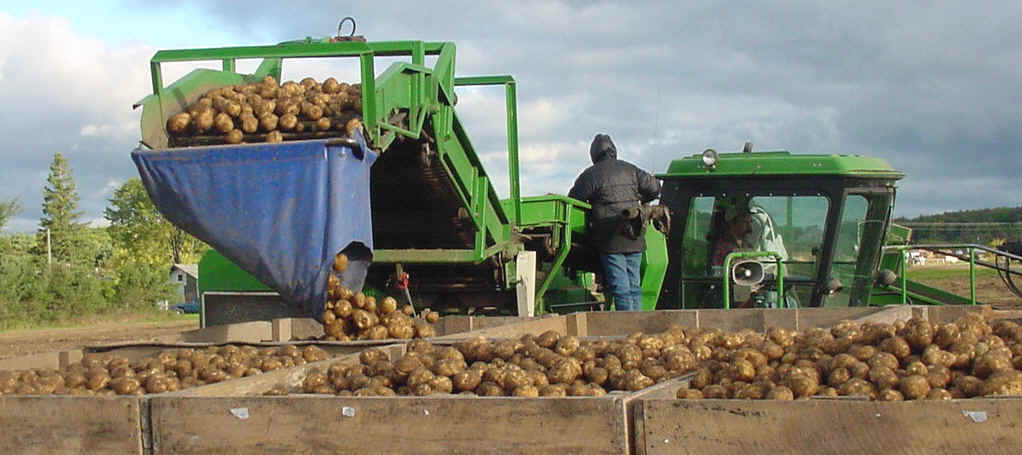
Source: Photograph by Randy Schaetzl, Professor of Geography - Michigan State University
A medium potato, weighing between 5 and 10 ounces, has 76 calories --
no more than an apple. Potatoes are fat-free, rich in potassium and an excellent source of
fiber. Additionally, this vegetable contains one-half the daily requirement of vitamin C,
15 percent of the recommended daily allowance of vitamin B6 and 10 percent of the niacin
requirements. Potatoes should be stored in a cool, dry, dark place between 35 and 50 F.
They should always be warmed to room temperature before being cooked.
Farming may be either specialized or diversified, sometimes called
general, according to the number of enterprises produced. The trend in Michigan’s
agriculture is and has been toward greater specialization with crop and livestock
enterprises. This has been most evident with potatoes. The 1950 Census reports only 40% as
many farmers growing potatoes as there were in 1930, and potato acreage was reduced to 37%
of what it was in 1930. Acre yields in Michigan increased, however, about 50% during that
period. Potatoes are now being commercially produced largely in the areas where the soil
and climate are most favorable to the crop.
Today, Michigan's potato production ranks about 8th in the nation. Michigan
potato farmers produced more than 13.8 million hundredweight of potatoes in 1995, on
46,000 acres. The majority of Michigan potatoes are white potatoes and are sold for
fresh table use or processed for potato chips. Snowden, the leading white variety,
comprised 34.7% of all planted acres. The remainder are virtually all Russets and used for
french fries and other frozen products.

Source: Unknown
Montcalm, Bay and Presque Isle continue to be the leading counties in potato acreage and
production.
Potatoes are more "soil-particular" than they are "climate-particular". Hence, they are grown throughout the state, wherever the soils are suitable. Potatoes require deep, well-drained soils that are open and loose, not hard and clayey. High organic matter (humus) contents and high fertilities are a must for potatoes. For years, Montcalm County, with its vast acreages of sandy loam soils, has led the state in potato production. MSU has an agricultural experiment station in Montcalm County, partially devoted to studying potato production.
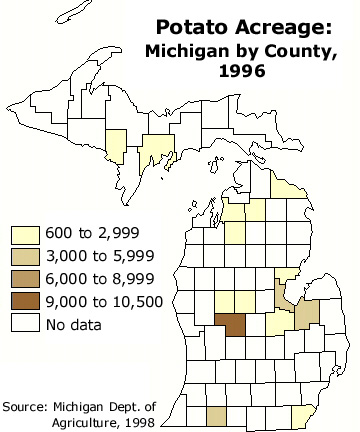
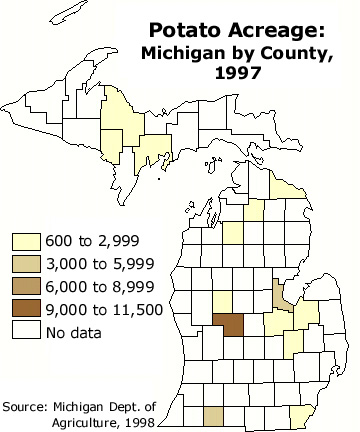
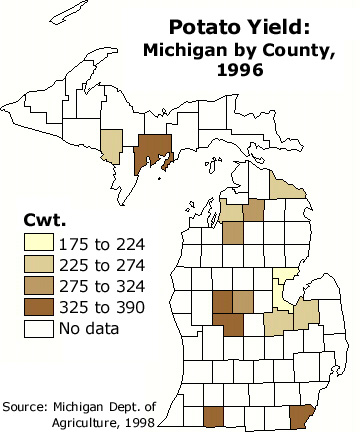
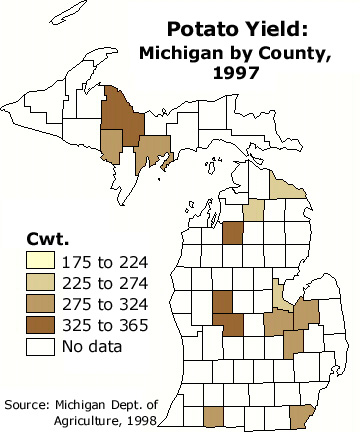
A second area of potato production lies in Presque Isle County, centered on the city of
Posen. Visit Posen in September for its annual Potato Festival!
The image below shows a healthy field of potatoes in late June. The potatoes have been "hilled" (soil piled up around the bases of the plants) to keep light from reaching the tubers. If it does, green potatoes are the result!

Source: Photograph by Randy Schaetzl, Professor of Geography - Michigan
State University
Did you know that potatoes flower? They do, as the images below show.
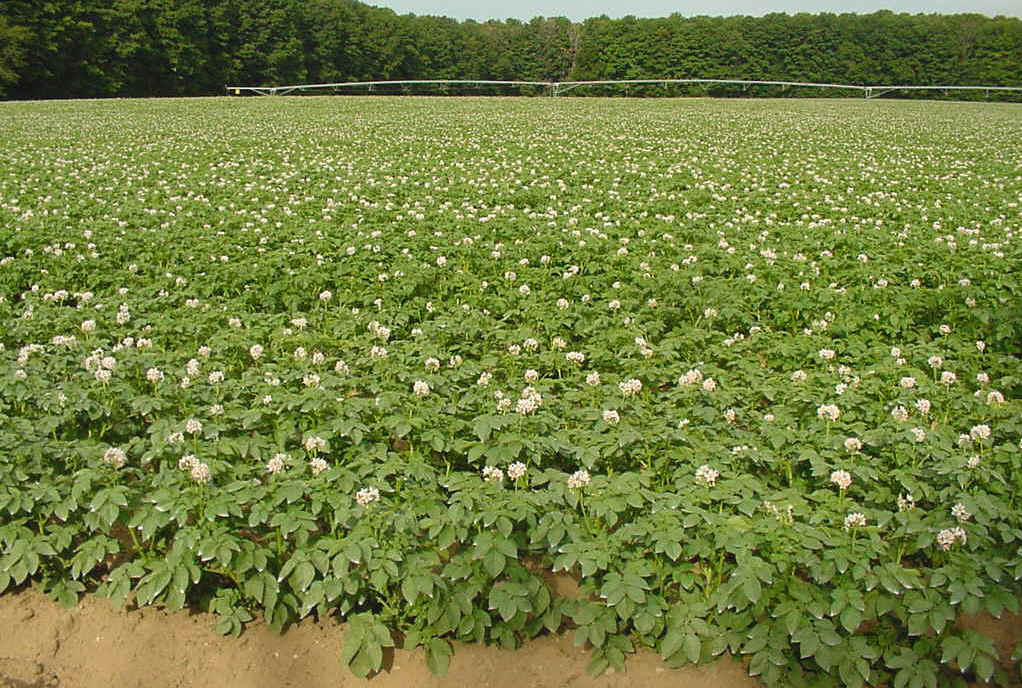
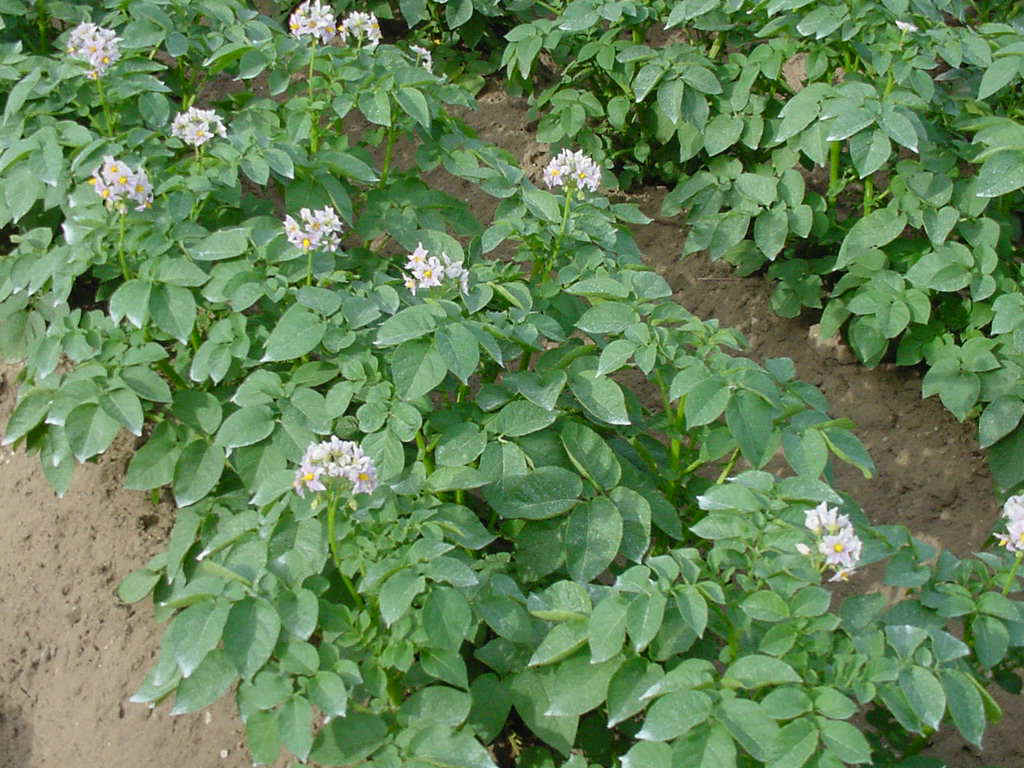
Source: Photograph by Randy Schaetzl, Professor of Geography - Michigan
State University
Ever see a green potato chip? The green color means that it was exposed to sunlight while
it grew; it was not hilled adequately.
Potato trivia: One man in Scandinavia lived for 300 days on nothing
but spuds dressed with a little butter.
Click here to go to the page on potato harvesting.
This material has been compiled for educational use only, and may not be reproduced without permission. One copy may be printed for personal use. Please contact Randall Schaetzl (soils@msu.edu) for more information or permissions.